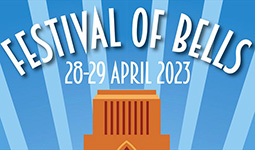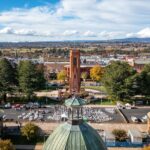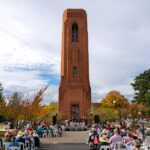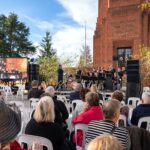Registration is required. To register, please click on the calendar icon and select either April 28th or 29th, then complete the registration process.
The bi-annual Festival of Bells is centred around the recently upgraded – and now world-class – Bathurst War Memorial Carillon.
One of just three Carillons in Australia, the Bathurst Carillon is unique as the only one located in regional and rural Australia.
Free family events range from a commemorative Last Post Ceremony and opening of the Eternal Flame Chamber to the public, followed by a day of entertainment and celebration, finishing with Tchaikovsky’s 1812 Overture and finale of all city bells.
Music performances will feature the Carillon, Anglican Cathedral pealing bells, bands, schools, and local musical talent. The very best of local food and wine is also available at the venue.
Programs available on the day for $5.






